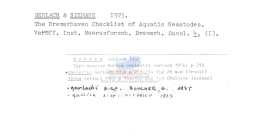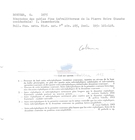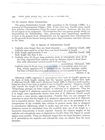WoRMS taxon details
Eubostrichus Greeff, 1869
- Species Eubostrichus africanus Muthumbi, Verschelde & Vincx, 1995
- Species Eubostrichus dianeae Hopper & Cefalu, 1973
- Species Eubostrichus fertilis Ott, Leisch & Gruber-Vodicka, 2014
- Species Eubostrichus filiformis Greeff, 1869
- Species Eubostrichus hopperi Muthumbi, Verschelde & Vincx, 1995
- Species Eubostrichus hortulanus Leduc, 2013
- Species Eubostrichus longisetosus Muthumbi, Verschelde & Vincx, 1995
- Species Eubostrichus otti Hourston & Warwick, 2010
- Species Eubostrichus parasitiferus Chitwood, 1936
- Species Eubostrichus phalacrus Greeff, 1869
- Species Eubostrichus topiarius Berger, Urbancik & Ott, 1996
- Species Eubostrichus exile accepted as Catanema exile Cobb, 1920 (wrong combination)
- Species Eubostrichus exilis (Cobb, 1920) Gerlach, 1963 op. Ott et al., 1995 accepted as Catanema exile Cobb, 1920
- Species Eubostrichus gerlachi Hopper & Cefalu, 1973 accepted as Laxus gerlachi (Hopper & Cefalu, 1973) Tchesunov, 2013
- Species Eubostrichus porosum (Hopper & Cefalu, 1973) accepted as Catanema porosum Hopper & Cefalu, 1973 accepted as Robbea porosum (Hopper & Cefalu, 1973) Tchesunov, 2013 (This combination never existed. Gerlach (1963) synonymised Catanema with Eubostrichus but Hopper & Cefalu (1973) later refuted this when first describing Catanema porosum. Catanema is still considered a valid genus by Tchesunov 2013)
marine, brackish, fresh, terrestrial
recent only
Certes, A. (1891). Mission Scientifique du Cap Horn 1882-1883. <em>Appendice Tome VI, Zoologie, Protozoaires.</em> 6: 1-53., available online at https://www.biodiversitylibrary.org/page/34800573 [details]
Nomenclature OPINION 2046 (Case 3185)
Criconema Hofmänner & Menzel, 1914 (Nematoda): Eubostrichus guernei Certes, 1899 designated as...
Criconema Hofmänner & Menzel, 1914 (Nematoda): Eubostrichus guernei Certes, 1899 designated as...
Nomenclature OPINION 2046 (Case 3185)
Criconema Hofmänner & Menzel, 1914 (Nematoda): Eubostrichus guernei Certes, 1899 designated as the type species.
Criconema Hofmänner & Menzel, 1914 (Nematoda): Eubostrichus guernei Certes, 1899 designated as the type species.
Abstract. The Commission has ruled that current usage of the generic names Criconema Hofmänner & Menzel, 1914 and Criconemoides Taylor, 1936 is maintained by the designation of Eubostrichus guernei Certes, 1889 as the type species of the free-living soil nematode genus Criconema. [details]
Nemys eds. (2025). Nemys: World Database of Nematodes. Eubostrichus Greeff, 1869. Accessed through: World Register of Marine Species at: https://www.marinespecies.org/aphia.php?p=taxdetails&id=2351 on 2025-05-11
![]() The webpage text is licensed under a Creative Commons
Attribution 4.0 License
The webpage text is licensed under a Creative Commons
Attribution 4.0 License
Nomenclature
original description
Certes, A. (1891). Mission Scientifique du Cap Horn 1882-1883. <em>Appendice Tome VI, Zoologie, Protozoaires.</em> 6: 1-53., available online at https://www.biodiversitylibrary.org/page/34800573 [details]
basis of record Nemaslan: Biodiversity of Antarctic Nematodes (2004). (look up in IMIS) [details]
basis of record Nemaslan: Biodiversity of Antarctic Nematodes (2004). (look up in IMIS) [details]
Taxonomy
taxonomy source
Tchesunov, A. V.; Ingels, J.; Popova, E. V. (2012). Marine free-living nematodes associated with symbiotic bacteria in deep-sea canyons of north-east Atlantic Ocean. <em>Journal of the Marine Biological Association of the United Kingdom.</em> 92(06): 1257-1271. (look up in IMIS), available online at https://doi.org/10.1017/s0025315411002116 [details] Available for editors  [request]
[request]
Ecology
ecology source
Raes, M.; De Troch, M.; Ndaro, S. G. M.; Muthumbi, A.; Guilini, K.; Vanreusel, A. (2007). The structuring role of microhabitat type in coral degradation zones: a case study with marine nematodes from Kenya and Zanzibar. <em>Coral Reefs.</em> 26 (1): 13-126. [details] Available for editors  [request]
[request]
ecology source Vanreusel, A., M. Vincx, D. Van Gansbeke & W. Gijselinck, W. (1992). Structural analysis of the meiobenthos communities of the shelf break area in two stations of the Gulf of Biscay (N.E. Atlantic). <em>Belgian Journal of Zoology.</em> 122(2):185-202. (look up in IMIS) [details] Available for editors [request]
[request]
ecology source Vanreusel, A., M. Vincx, D. Van Gansbeke & W. Gijselinck, W. (1992). Structural analysis of the meiobenthos communities of the shelf break area in two stations of the Gulf of Biscay (N.E. Atlantic). <em>Belgian Journal of Zoology.</em> 122(2):185-202. (look up in IMIS) [details] Available for editors
Other
additional source
Various Authors (2000). Nematode filing cabinet of the Marine Biology Section Ugent - in combination with the NemasLan Ms-Access database (published on CD-Rom, 2000) (look up in IMIS) [details]
additional source Van Gaever, S.; Vanreusel, A.; Hughes, J.; Bett, B.; Kiriakoulakis, K. (1999). The macro- and micro-scale patchiness of meiobenthos associated with the Darwin Mounds (north-east Atlantic). <em>Journal of the Marine Biological Association of the UK.</em> 84(3): 547-556., available online at https://doi.org/10.1017/s0025315404009555h [details] Available for editors [request]
[request]
additional source Venekey, V.; Fonseca-Genevois, V.; Santos, P. J. P. (2010). Biodiversity of free-living marine nematodes on the coast of Brazil: a review. <em>Zootaxa.</em> 2568: 39–66. [details] Available for editors [request]
[request]
additional source Jensen, P. (1986). The nematode fauna in the sulphide-rich brine seep and adjacent bottoms of the East Flower Garden, NW Gulf of Mexico. <em>IV. Ecological aspects. Marine Biology.</em> 92: 489-503. [details] Available for editors [request]
[request]
additional source Verschelde, D.; Nicholas, W.; Vincx, M. (2006). A Review of the Genera Croconema Cobb, 1920 and Pseudochromadora Daday, 1899 (Nematoda, Desmodoroidea): New Species from the Coasts of Kenya and Australia. <em>Hydrobiologia.</em> 571, 17-40. (look up in IMIS) [details]
additional source Van Gaever, S.; Vanreusel, A.; Hughes, J.; Bett, B.; Kiriakoulakis, K. (1999). The macro- and micro-scale patchiness of meiobenthos associated with the Darwin Mounds (north-east Atlantic). <em>Journal of the Marine Biological Association of the UK.</em> 84(3): 547-556., available online at https://doi.org/10.1017/s0025315404009555h [details] Available for editors
additional source Venekey, V.; Fonseca-Genevois, V.; Santos, P. J. P. (2010). Biodiversity of free-living marine nematodes on the coast of Brazil: a review. <em>Zootaxa.</em> 2568: 39–66. [details] Available for editors
additional source Jensen, P. (1986). The nematode fauna in the sulphide-rich brine seep and adjacent bottoms of the East Flower Garden, NW Gulf of Mexico. <em>IV. Ecological aspects. Marine Biology.</em> 92: 489-503. [details] Available for editors
additional source Verschelde, D.; Nicholas, W.; Vincx, M. (2006). A Review of the Genera Croconema Cobb, 1920 and Pseudochromadora Daday, 1899 (Nematoda, Desmodoroidea): New Species from the Coasts of Kenya and Australia. <em>Hydrobiologia.</em> 571, 17-40. (look up in IMIS) [details]
 Present
Present  Inaccurate
Inaccurate  Introduced: alien
Introduced: alien  Containing type locality
Containing type locality
Unreviewed
Nomenclature OPINION 2046 (Case 3185)Criconema Hofmänner & Menzel, 1914 (Nematoda): Eubostrichus guernei Certes, 1899 designated as the type species.
Abstract. The Commission has ruled that current usage of the generic names Criconema Hofmänner & Menzel, 1914 and Criconemoides Taylor, 1936 is maintained by the designation of Eubostrichus guernei Certes, 1889 as the type species of the free-living soil nematode genus Criconema. [details]








